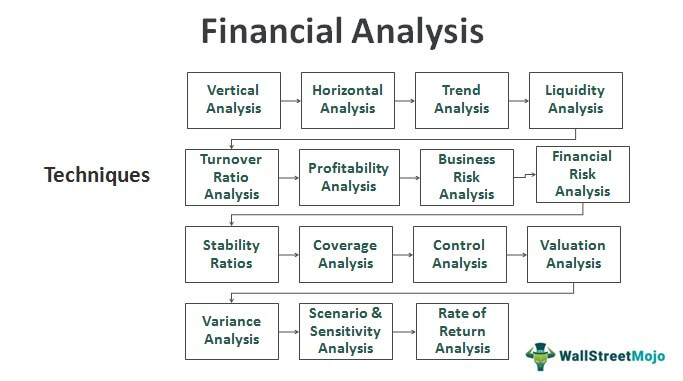Financial analysis is the process of evaluating a company’s financial statements to assess its financial health and performance. Financial analysts use a variety of tools and techniques to analyze financial statements, including ratio analysis, trend analysis, and comparative analysis.
Ratio analysis is the process of comparing different financial ratios to identify trends and patterns. Financial ratios are calculated by dividing one financial statement item by another. For example, the current ratio is calculated by dividing current assets by current liabilities. A high current ratio indicates that a company has enough liquid assets to cover its short-term obligations.
Trend analysis is the process of tracking a company’s financial performance over time. Trend analysis can help analysts identify whether a company’s financial performance is improving or declining. For example, an analyst might track a company’s revenue growth over the past five years to see if it is increasing or decreasing.
Comparative analysis is the process of comparing a company’s financial performance to that of its competitors or to industry averages. Comparative analysis can help analysts identify whether a company is performing better or worse than its competitors. For example, an analyst might compare a company’s return on equity to the industry average to see if it is above or below average.
Financial analysis can be used for a variety of purposes, including:
- Investment analysis: Investors use financial analysis to assess the potential risk and return of an investment.
- Credit analysis: Lenders use financial analysis to assess the creditworthiness of a borrower.
- Business planning: Businesses use financial analysis to develop financial plans and forecasts.
- Government regulation: Government regulators use financial analysis to monitor the financial health of businesses.
Financial analysis is a complex and time-consuming process, but it can be a valuable tool for making informed financial decisions.
Here are some additional tips for conducting financial analysis:
- Use a variety of tools and techniques. No single tool or technique can provide a complete picture of a company’s financial health.
- Consider the company’s industry and competitors. Financial ratios and trends should be evaluated in the context of the company’s industry and competitors.
- Compare the company’s financial performance over time. Trend analysis can help identify whether a company’s financial performance is improving or declining.
- Compare the company’s financial performance to industry averages. Comparative analysis can help identify whether a company is performing better or worse than its competitors.
- Be aware of the limitations of financial analysis. Financial analysis is based on historical data, and it is not always possible to predict future performance.
Financial analysis is a valuable tool for making informed financial decisions. By using a variety of tools and techniques, and by considering the company’s industry and competitors, analysts can gain a better understanding of a company’s financial health and performance.thumb_upthumb_downuploadGoogle itmore_vert






